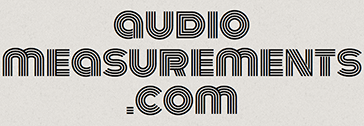One of the things I learned long ago is to tap on the sides of a speaker enclosure to get a sense of how well built it is. An ideal speaker would transfer 100% of the vibrations from the drivers into the air and not into the cabinet walls. Concrete would be a superior speaker enclosure material but the weight factor renders it useless except in the extreme high end HIFI realm. For most us, MDF / plywood / hardwood are going to be the materials used to build an enclosure. There are other enclosures built out of similar materials. They’re called drums. While a resonant drum is desirable, a resonant speaker enclosure is not desirable. In order to avoid speaker enclosure resonances (when the enclosure starts to resonant along with the sound it reproducing), the speaker enclosure needs to be properly braced and dampened. Expensive speakers are typically well braced and dampened. Inexpensive & lightweight enclosures typically are not well braced and dampened.
With the tap test, you can get an idea of how an enclosure will behave when it’s reproducing sound. If a speaker sounds like a drum when you tap on it, it will resonate the same way when reproducing sound which is NOT a good thing. Speaker enclosures are NOT drums and drums are NOT speaker enclosures. One requires different construction and design than the other.

